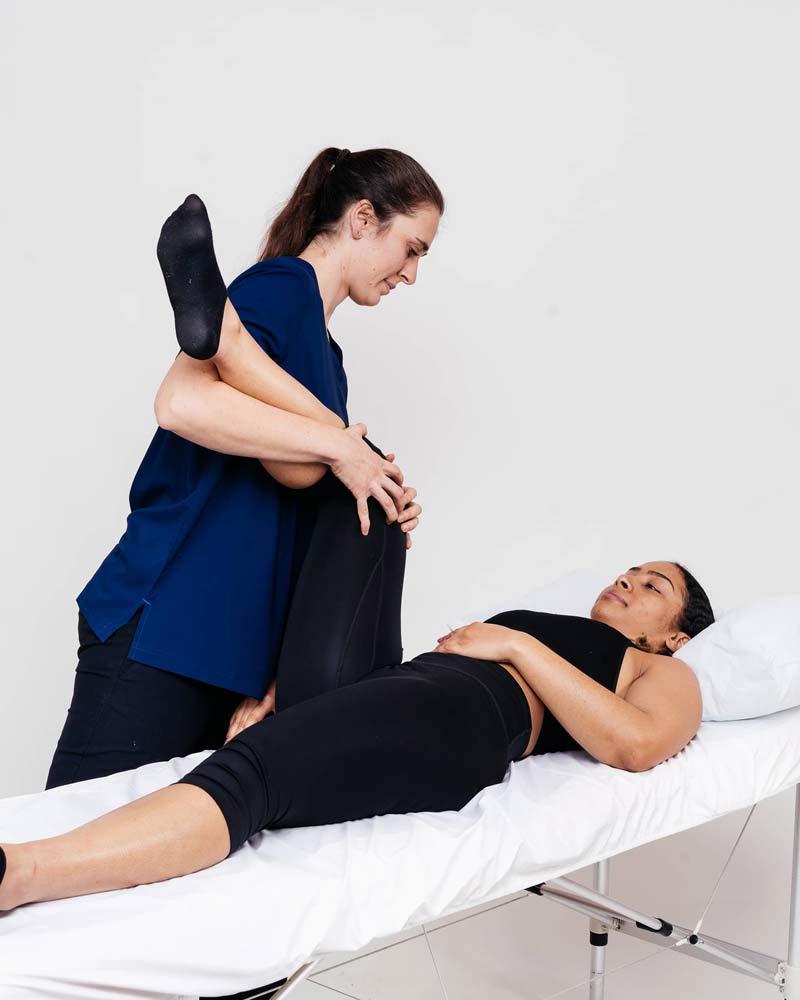OSTEOPATHY
WHAT IS OSTEOPATHY?
Osteopathy is used to assess, diagnose, and treat a wide range of musculoskeletal conditions.
Maintaining a state of good health and wellbeing requires striking a balance between the internal systems of your body and external demands of your daily life. With ever increasing demands, our bodies can struggle to adapt and compensate. This often results in pain and loss of function.
Osteopathic Treatment involves a wide range of techniques, combined with rehabilitative exercise and lifestyle modifications to help.
Our Osteopaths are fully insured and registered with the General Osteopathic Council.
WHAT CAN OSTEOPATHY TREAT?
People seek osteopathic treatment for a variety of reasons. This might include:
Shoulder pain
Sports related injury
Osteoarthritis
Hip pain
Knee pain
Ankle pain
Nerve related pain
Fibromyalgia
Strains, Sprains, and muscle tears
Acute or chronic back pain
Acute or chronic neck pain
HOW WILL AN OSTEOPATH IMPROVE MY PAIN?
Mobilisation and manipulation of joints
Soft tissue techniques
Assessment and treatment of postural, pelvic and spinal alignment
Dry Needling

Taping to protect joints and injured tissues
Biomechanical assessment of movements through video analysis
Re-training to prevent recurring injuries
Specific exercise prescription for the prevention and rehabilitation of injury and chronic pain
FAQS
HOW DO I FIND AN OSTEOPATH NEAR ME?
There are many ways to find a local osteopath:
1)You can ask friends, family, or colleagues for recommended osteopaths they have seen. Word of mouth referrals are great as the positive experience of someone you know and trust goes a long way.
2) You can search the Osteopath Register on the General Osteopathic Council Website by typing your postcode into their search bar.
3) Type ‘Osteopaths Near Me’ , ‘Local Osteopaths’ or ‘Best Osteopath Near Me’ into a search engine and it should pull up map listings and nearest results. Check out some of the osteopathy reviews or testimonials to see what experiences people have had at the clinic.
WHAT CAN I EXPECT FROM MY OSTEOPATHY APPOINTMENT?
Following treatment you may be given some home exercises or self management tips to work on in between appointments.
WHAT SHOULD I WEAR FOR MY OSTEOPATHY APPOINTMENT?
Ideally wear clothes that do not restrict movement e.g. sports/activewear. Avoid jeans or tailored trousers as these are very difficult for your osteopath to work with.
IS OSTEOPATHY REGULATED?
Osteopathy is considered to be an Allied Health Profession by the NHS.
IS OSTEOPATHY SAFE?
WHAT IS THE DIFFERENCE BETWEEN A PHYSIO, A CHIROPRACTOR, AND AN OSTEOPATH?
IS IT NORMAL TO FEEL PAIN AFTER AN OSTEOPATHY SESSION?
Your body has already produced inflammation in response to the initial injury. Osteopathy aims to work on factors that are maintaining your symptoms so should not be producing further inflammation. Your body must still process what has been produced so some pain and stiffness will linger.
Although unpleasant, do not be put off from continuing with your treatment plan. Let your osteopath know at your next appointment so they can review the treatment and make adjustments as necessary.
IS OSTEOPATHY EVIDENCE-BASED?
DO I NEED TO SEE A DOCTOR BEFORE I BOOK AN OSTEOPATHY APPOINTMENT?
IS OSTEOPATHY A DEGREE COURSE?
IS OSTEOPATHY AVAILABLE VIA THE NHS?
Our Approach
We let you tell your story. We ask a lot of questions. It's important to not only identify the source of your pain but also why you are experiencing it. At Tottenham Hale Osteopaths we recognise that in order to successfully overcome pain or injury there must be a partnership between patient and practitioner.
You can expect a treatment plan tailored to you delivered by a friendly, knowledgeable team.
